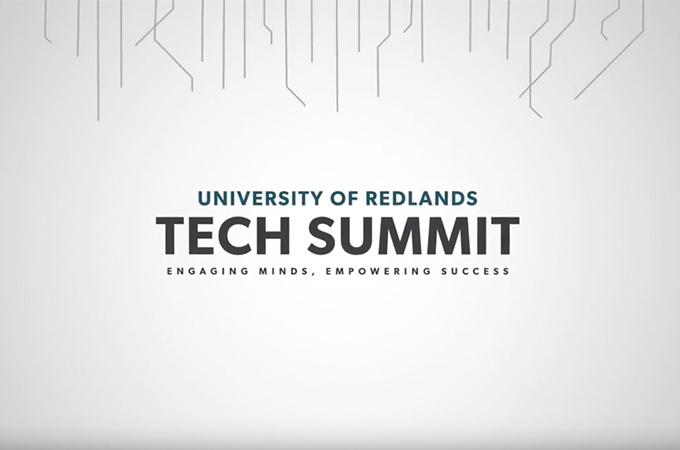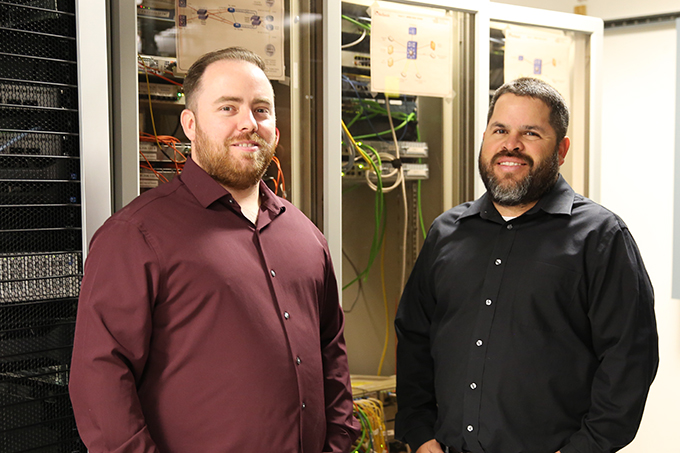On October 29, the University of Redlands will host its first Technology Summit, which is free and open to the public. Featuring panels and presentations from a variety of information technology (IT) professionals, the event aims to foster discussion around privacy and security, leveraging data, and emerging technologies in the field. Katie Olson of the Bulldog Blog sat down with Alex Irigoyen and Alton Edenfield II, who work in the University’s Information Technology Services department, to talk about their goals for the event and the changing landscape of IT.
Bulldog Blog: Why was this event created? What need did you see?
Alton Edenfield II: We wanted to create a conference in the Inland Empire for IT professionals specifically. There isn’t one in this area—the closest events are usually hours away. We wanted to create a networking opportunity for the many IT professionals in this area. The main purpose is to get like-minded people together to share ideas and learn from each other. IT is an ever-changing field, and it’s our responsibility to keep up with what’s happening.
BB: Who can register for the event?
Alton Edenfield II: The event is open to the general public. There will be big focus on state and local education and government, but anyone is welcome to come.
Irigoyen: We’re also expecting people from the geographic information systems (GIS) community to attend. We have a GIS track at the summit, and several people within this field are going to be giving presentations.
BB: There will be three learning tracks that attendees can choose from: enhancing privacy and security, leveraging data within IT, and emerging technologies. Why did you choose to focus on these specifically?
Irigoyen: We started off thinking of this conference as a security conference, but then realized there’s more to it. We wanted to have a track focused on security, but we also wanted to talk about other topics, which is where data management and emerging technologies come in. Cybersecurity Center from California State University, San Bernardino, is going to perform a security presentation; a person from NASA’s Jet Propulsion Laboratory is coming to talk about the next Mars Rover project; and we’ll talk about artificial intelligence and the latest innovations that are exciting for the industry as a whole.
BB: Quite a few IT professionals from other universities will be in attendance. How do their jobs differ from other IT professionals?
Irigoyen: There’s definitely a different mindset in higher education IT. We’re focused on students and making sure they are empowered and competent when they enter the workforce. Today, teenagers are so literate in technology. When they come to college, they expect to have access to the same technology they had at home, which means we need to deliver that while still protecting their sensitive data.
BB: As you note, the landscape of IT is ever-changing. What are some challenges that IT professionals currently face?
Irigoyen: One of the biggest challenges is the amount of data that’s available—whether it’s through social networking or mobile connections, a lot is available at peoples’ fingertips. Everything is becoming internet-related and app-enabled, and what’s convenient isn’t always secure. So being able to manage all of that on top of making it easy to use and secure is difficult.
BB: There seems to be a misconception that hackers are people hunched over computers in dark rooms when, in reality, that’s not usually how it works. What is cybercrime and how is it carried out?
Irigoyen: Cybercrime is any crime committed using a computer. Ransomware attacks, phishing attacks, and identity fraud are all examples of cybercrime. Yes, hackers are usually depicted as people in hoodies with computers, but that’s not true at all. A lot of people are paid to get information from you and to develop software that steals information. I think it’s important to be aware of these incidents and the potential risk that comes with them.
BB: It’s National Cybersecurity Awareness Month. What can people do to improve the security of their information online?
Edenfield: I advise people to avoid filling out their social media profiles completely. Hackers are all about data collection, so they can call the place of work listed on your LinkedIn profile, verify you work there, and use that to start collecting your information. Not filling out your profile completely could help prevent that.
Irigoyen: I would just suggest that people be more aware, especially with the attacks happening today. Emails can be so deceptive. Criminals are getting more creative with the emails they’re sending, and people are clicking on links and getting their credentials stolen. Being aware of what you’re clicking on and what you’re posting should definitely be a priority.

Visit the Technology Summit website or register for the event.






